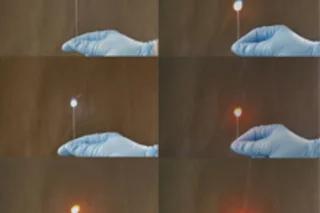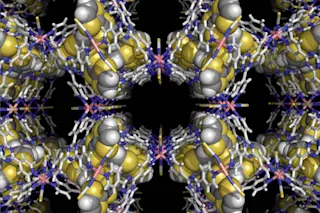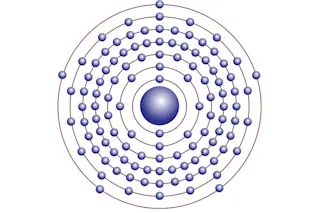"LOOK MOM NO ELECTRICITY." That was the first message conveyed by a rudimentary new communication system that researchers are calling the "infofuse." In a new study, researchers printed patterns of three different flammable metallic salts on a nitrocellulose fuse and then set the fuse on fire. As it burned, it emitted pulses of different colored light that can be interpreted with a Morse code system. In the study, published in the Proceedings of the National Academy of Sciences, researchers explain that they
developed a code for the alphabet, numbers and four special characters (a full-stop, comma, exclamation mark and the "@" sign) based on the presence or absence of one of the three metals in each dot. Extra coding information comes from the length of the dot, which determines the duration with which it burns, and the space between dots, where no colour is produced [New Scientist].
They placed dots ...








